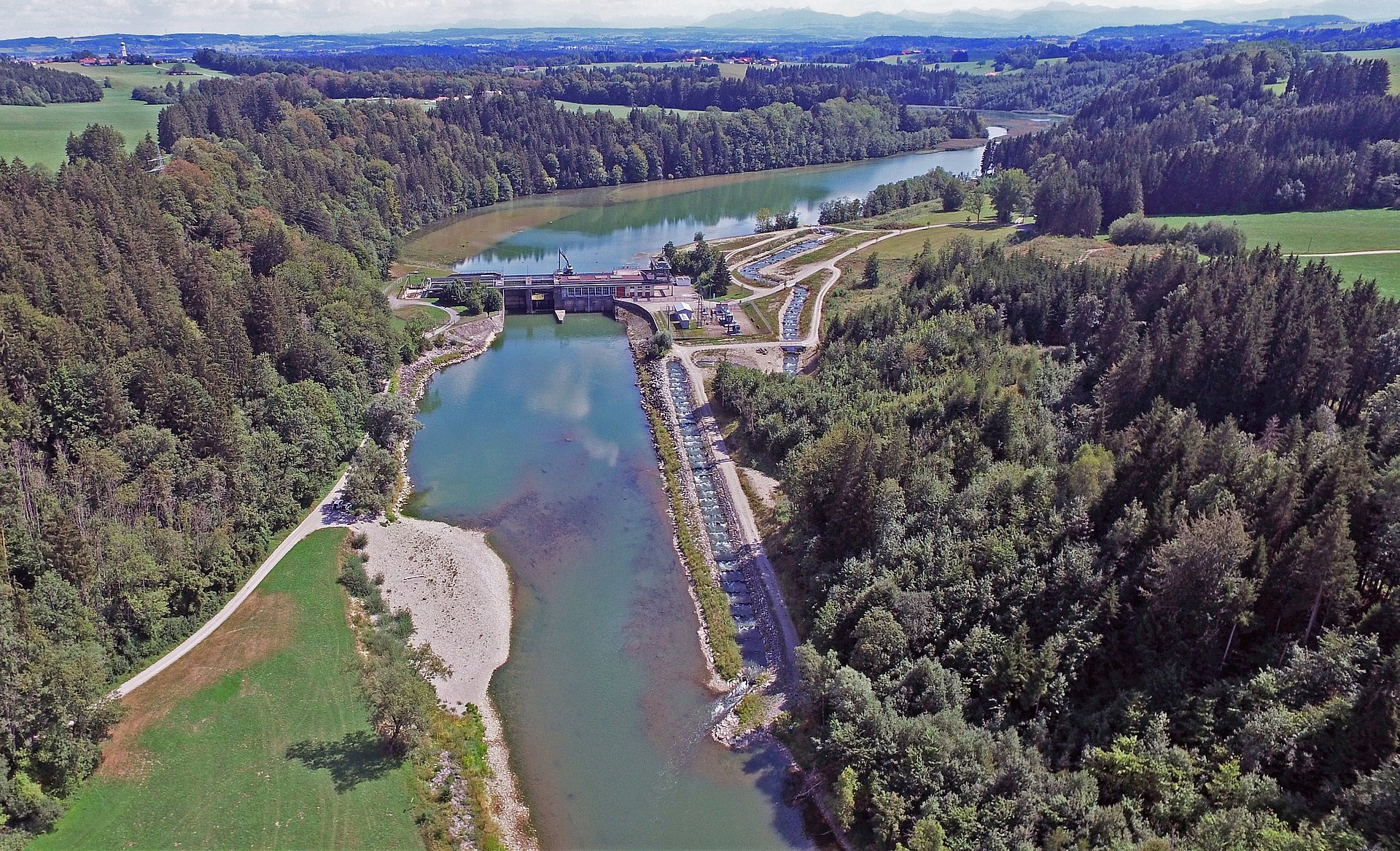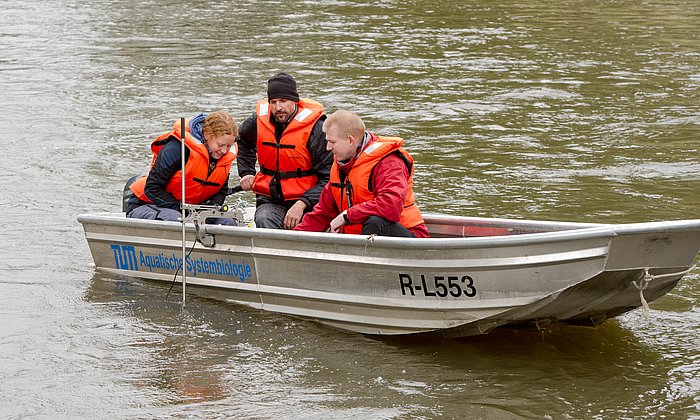EU project "FIThydro" studies environmental impact of hydroelectric power plants
On the way to fish-friendly hydropower

Hydropower is one of the most important and widely used renewable energy sources. The big advantage: it is far less weather-dependent than wind power and solar energy. However, the use of hydropower plants also involves major interventions in the environment, including the damming of rivers, changes in aquatic habitats, and fish mortality through turbines, spillways or screens.
Reducing these negative ecological effects is one of the objectives of the European Water Framework Directive. However, older hydropower plants in particular often fail to meet these new requirements and need to be retrofitted before their certification can be renewed. The decision on economically viable measures for implementing these changes have to be made individually for every hydropower plant. “It is important to tailor existing solutions to the site-specific factors of each plant,” explains Prof. Peter Rutschmann of the Chair of Hydraulic and Water Resources Engineering at TUM.
Studying hydropower plants across Europe
In the four-year EU project FIThydro (Fishfriendly Innovation Technologies for Hydropower), a work group made up of 26 European research institutions and companies studied the effects of hydropower plants on ecosystems and in particular on fish at 17 test sites in eight countries. "It was important to us that the test sites reflect the diverse geographical, hydromorphological and climate conditions so that our results would be applicable to a wide range of hydropower plants in Europe," explains Rutschmann.
The project partners initially investigated existing methods, technologies and approaches for assessing the impact of the power plants and possible protective measures at the test sites and in laboratories. "We wanted to identify the knowledge gaps and find out how we could improve existing tools," says Rutschmann.
Hazard index for fish populations
One example is the Fish Population Hazard Index for European fish species, which quantifies the risk posed by hydropower use to fish populations. It was developed by scientists at the TUM Chair of Aquatic Systems Biology and the Leibniz-Institute of Freshwater Ecology and Inland Fisheries. They collected data such as fish lifespan, reproduction rates and migration behavior as well as habitat requirements such as temperature and flow rate of the stream. Using this data, tolerance thresholds were derived for individual species that are specific to the impacts of hydropower plants. These can then be used by hydropower operators for the assessment and planning of mitigation measures.
There are also gaps in the existing knowledge on effective upstream and downstream fish migration measures – such as which fish ladders are suitable for which species or which conditions are ideal for fish to find them. During downstream migration, fish can swim through the hydropower turbines and, apart from the risk of injury from the turbine blades, are exposed to enormous pressure changes. With high-tech sensors developed in the project by the Tallinn University of Technology as well as with new simulation models, these factors can now be studied in detail. The results could be used, for example, to adjust power plant operations during fish migration periods in order to minimize harm to fish populations.
Decision making tools for hydropower operators
The second part of the project explored possible measures to retrofit hydropower plants – as well as decision making tools for hydropower operators and planners. "These decisions are highly complex," says Rutschmann. "The hydropower plant and the site-specific conditions play a role. But it is also necessary to comply with regulatory standards on the national and EU level. And for the operators it is of course important for the measures to be effective and cost-efficient."
Consequently, the TUM Chairs of Agricultural Production and Resource Economics and of Aquatic System Biology worked with the Norwegian research organization SINTEF to produce a systematic cost analysis. The cost framework contains data on river restoration, fish migration structures, fish protection systems and sediment management as well as the implementation of ecologically optimized discharge events. This summary helps to identify the optimal and most cost-effective solutions for mitigating the impacts of a hydropower plant.
Open-access online tools
One of the main results of the project is the FIThydro Decision Support System that can be used when planning and assessing hydropower plants. The user can enter data on the type of the power plant, its location, the fish populations present in the waterways and other characteristics. Taking into account environmental policy requirements and international regulatory guidelines, the software then analyzes the data to calculate the level of environmental risk and the fish population hazard and recommends mitigation measures.
A wiki has also been created in the project. "There are different practices in every country, but the knowledge exchange is not yet where it should be," says Rutschmann. "For example, people are often unaware of measures that have been tried out and found to be efficient elsewhere. We hope that the wiki will support the networking of knowledge."
- Picture for editorial use
- The research project "Fishfriendly Innovative Technologies for hydropower (FIThydro)" involves 13 research institutions and 13 companies in Germany, Belgium, Estonia, France, the UK, Norway, Austria, Portugal, Switzerland and Spain. It is coordinated at the Chair of Hydraulic and Water Resources Engineering at the Technical University of Munich (TUM). Also participating at TUM are the Chair of Aquatic Systems Biology and the Chair of Agricultural Production and Resource Economics. The project received 7.2 million euros in research funding from the EU research and innovation program Horizon 2020 and the Swiss National Fund for Scientific Research (SNF).
- FIThydro Website
- FIThydro Decision Support System
- FIThydro Wiki
Contacts to this article:
Prof. Dr. Peter Rutschmann
Technical University of Munich
Chair of Hydraulic and Water Resources Engineering
+49 89 289 23161
peter.rutschmann@tum.de
info@fithydro.eu


